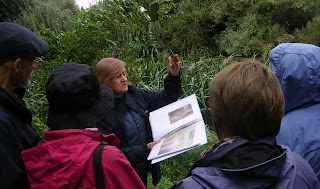The Sopwell Residents Association has been holding history walks for several years now and they are always popular.
So I thought this would be an easy task as I quickly put together five easy walks. But then it was pointed out to me that what I think is an easy route to follow may not be to a stranger to St Albans, let alone Sopwell. When it is all so familiar, it is difficult to write a route with the eyes of a stranger in mind.
Another niggle is that some people who live in St Albans are not familiar with and do not know where Sopwell is. They have heard of the Sopwell House Hotel and think that is where Sopwell is. (One of my original interviewees still tells me off for not putting ‘St Albans’ as well as Sopwell on the cover of my book). Hopefully, these walk leaflets and the book, and eventually the website containing Sopwell memories will hopefully go some way towards educating residents and visitors about Sopwell.
Interestingly, most Albanians have heard of Cottonmill, which is just one part of Sopwell, maybe because they used to live there or they have seen it on the S4 and S5 buses, or from its reputation as being a bit of a rough area. Having interviewed many residents and ex-residents, I wondered why it had this reputation. Admittedly, children in the 1940s, 1950s and 1960s were allowed free rein to roam around at will. I have heard many stories where during the school summer holidays, parents kicked them out in the morning and they weren’t expected back until evening meal time. They had a wonderful time roaming all over the green spaces, building sites, railways and the river. They got up to all sorts of innocent mischief. On the other hand, there were many reported stories of vandalism on the newly built estates and I think this reputation has been hard to shift. The anti-social behaviour was not because of a lack of community cohesion as, having interviewed many residents, I found that community spirit was strong. Everybody knew their neighbours and looked out for each other. There is still a lot of that around today. Perhaps the rough reputation has finally disappeared with the growing up and moving on of the young people.
So where exactly is Sopwell? I quote from my book "Sopwell: a history and collection of memories": Sopwell is bordered by Old London Road, Holywell Hill (from Belmont Hill southwards), St Stephens Hill and Watling Street down to the Park Street roundabout, the North Orbital as far as the mainline railway bridge and encompasses the Cottonmill and St Julian’s estates, the area to the east of St Stephen’s church, New Barnes, Priory Park, the Verulam golf course and the Riverside Road Fisheries.
So now you know. Now to get back to my walks…..
--
Sandy Norman


No comments:
Post a Comment